Since 1955, the year of Daiwa House Industry's foundation, to the present,
Japanese society has transformed from a postwar reconstruction and rapidly growing economy to one that is maturing, aging, and declining in population.
Lifestyles and the use of technology in our everyday life have also changed dramatically.
Here, let us introduce the Daiwa House Group’s history of technology, outlining the changes in Japanese society over the years.

The Pipe House
![]()
Completed our first large-scale steel-frame structures
Daiwa House Industry
![]()
The Movable Classroom was launched. ![]()
Daiwa House Industry
Launched the Midget House![]() , a study room built in three hours
, a study room built in three hours
Daiwa House Industry
Daiwa Kosho Co., Ltd.(current Daiwa Lease Co., Ltd. ![]() )was founded.
)was founded.
Daiwa Lease

The Midget House
Go to 1960s

 ー
ー
Ten years after the end of World War II, Japan entered a period of unprecedented high economic growth. In 1953, television broadcasting began. 1954 ushered in the dawn of the Jinmu keiki, the economic boom. The year after Japan's real GNP per capita exceeded the prewar level, the trendy words of the year was “We are no longer in the postwar period.” Black-and-white televisions, washing machines, and refrigerators, the so-called “three sacred treasures” of household appliances, captured the hearts and minds of the public.
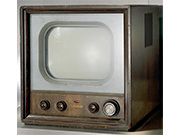
Japan’s first television set produced by Hayakawa Electric Industry (now named Sharp Corporation)

Mobile impeller-type washer with wringer rolls produced by Hitachi (now named Hitachi Appliances)
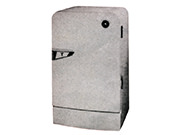
Electric refrigerator manufactured by Tokyo Shibaura Electric Co., Ltd. (now named Toshiba Corporation)
![]()
Daiwa House Type-A, a panel style prefabricated house, was launched.
Daiwa House Industry
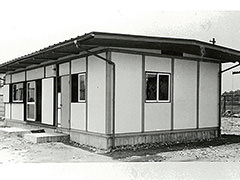
Daiwa House Type-A
![]()
Established the Nara Factory, Japan's first factory specializing in prefabricated houses.
Daiwa House Industry
Launched Daiwa Shell (prefabricated shell), a steel pipe structural shell which can cover large spaces
Daiwa House Industry
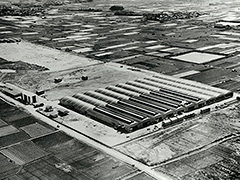
Nara Factory
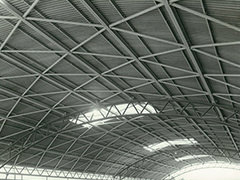
Daiwa Shell (prefabricated shell)
![]()
Started leasing and sales of temporary buildings
Daiwa Lease
![]()
Midori-ga-Oka Neopolis, our first independently developed large-scale urban housing development, went on sale.
Daiwa House Industry
Opened our first in-house factory, Yawata Factory
Daiwa Lease

Midori-ga-Oka Neopolis
Go to 1970s

 ー
ー
Amidst a period of high economic growth, urban populations grew sharply due to population inflow to the three major metropolitan areas of Tokyo, Nagoya, and Osaka. The year 1961 saw the groundbreaking of Japan's first large-scale new development site, Senri New Town. In 1962, the Metropolitan Expressway opened between Kyobashi and Shibaura. In1964, the year of the Tokyo Olympics, the Tokaido Shinkansen bullet train began service, leading to the infrastructure development. By 1968, when the housing shortage ceased to be a problem in Japan, the housing market underwent the transition from quantity to quality.
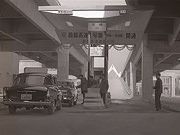
Opening ceremony of Metropolitan Expressway between Kyobashi and Shibaura
Photo by Metropolitan Expressway Company Limited
![]()
Computers were fully introduced for housing design, estimation, factory ordering systems and the like.
Daiwa House Industry
Developed Daiwa House C Series.
Daiwa House Industry
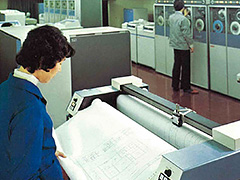
Computers were fully introduced
![]()
Released Daiwa Uniment modular-type rental housing
Daiwa House Industry
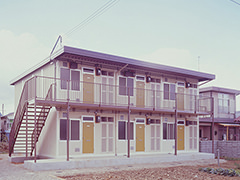
Daiwa Uniment
![]()
The Central Research Laboratory was established within the Nara Factory.
Daiwa House Industry
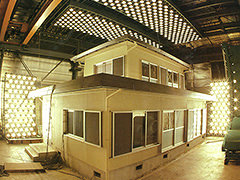
Testing on real buildings at Central Research Laboratory
![]()
Daiwa Elite (former model) went on sale.
Daiwa Lease
![]()
Daiwa House Solar DH-1, an energy efficient house, was offered for sale.
Daiwa House Industry
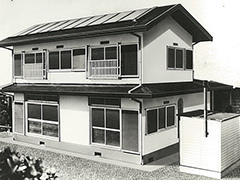
Daiwa House Solar DH-1, an energy efficient house
![]()
Daiwa High Lodge was offered for sale.
Daiwa Lease
Go to 1980s

 ー
ー
In 1970 Asia's first World Exposition, in Osaka's Senri Hills, symbolized the country's emergence as an economic giant second only to the United States. However, in 1973, the first oil crisis brought an end to the high economic growth. 1974 saw an unprecedented surge in prices fueled by rising land prices and high oil prices. Trends moved from movies to television, bringing about a golden age of popular music. In 1979, the Sony Walkman® changed the way people enjoyed music and proved to be a smash hit worldwide.
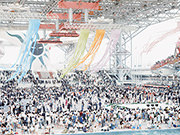
The 1970 Japan World Exposition in Osaka
Photo by Osaka Prefectural Government
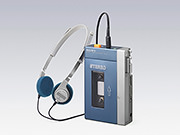
Sony's first-generation Walkman®
![]()
Established the Central Research Laboratory
Daiwa House Industry
![]()
Le Grand "Chimney House," the first Daiwa House G Series product
Daiwa House Industry

Le Grand "Chimney House"
![]()
Launched Federation of Cooperative Associations
Daiwa House Industry
![]()
Introduced Total Quality Control (TQC)
Daiwa Lease
![]()
The Silver Age Research Center was launched.
Daiwa House Industry
Launched Daiwa Thirty in commemoration of the 30th anniversary of foundation
Daiwa Lease
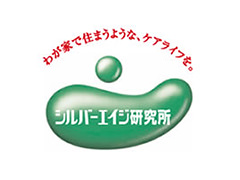
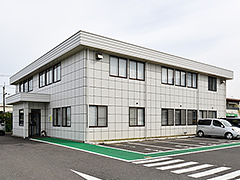
Daiwa Thirty
Go to 1990s

 ー
ー
The early 1980s witnessed the advent of the family computer and the shoulder phone, a precursor to the cell phone, ushering in an era when families owned their own video game consoles and people used portable phones. In 1985, the Nippon Telegraph and Telephone Public Corporation, and the Japan Tobacco and Salt Public Corporation became NTT and JT. In 1987, the Japanese National Railways was privatized into JR, marking major milestones in the era. In the late 1980s, the country entered a bubble economy that saw land and stock prices increase sharply. In 1989, the Nikkei Stock Average reached an all-time high.
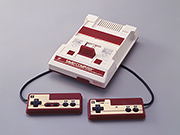
Nintendo Family Computer
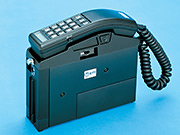
NTT Shoulder Telephone (model 100)
![]()
Development of factory production control system primarily for raw materials inventory control
Daiwa Lease
![]()
Daiwa House Industry Central Research Laboratory![]() was founded.
was founded.
Daiwa House Industry
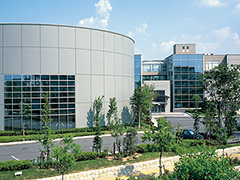
Central Research Laboratory
![]()
After the Great Hanshin Awaji Earthquake occurred, Daiwa House Group erected a total of more than 14,000 emergency temporary housing units.
Daiwa House Industry
Daiwa Lease
Became the first company in the Japanese construction industry to acquire ISO 9001 international quality standard certification for the Sendai Branch, Tohoku Factory and Head Office Procurement Department.
Daiwa House Industry

Temporary housing completed at a rapid pace in the affected area
(Seto Park in Higashinada Ward, Kobe City)
![]()
Healthy House Specifications measures in all single-family houses and rental housing products, were employed as standard.
Daiwa House Industry
Go to 2000s

 ー
ー
The 1992 Earth Summit in Rio de Janeiro brought environmental issues to the forefront. The year 1997 marked the adoption of the Kyoto Protocol at the third session of the Conference of the Parties to the United Nations Framework Convention on Climate Change (COP3), shifting anti-global warming actions into high gear. Although the 1995 Great Hanshin-Awaji Earthquake, the Sarin gas attack on the subway, and many other events stirred social unrest. 1998 saw the opening of Akashi Kaikyo Bridge, the world's longest suspension bridge, showcasing Japan's world-class technological prowess.
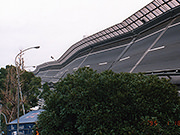
Collapsed Hanshin Expressway caused by the Great Hanshin-Awaji Earthquake
Photo by Kobe City
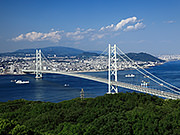
Akashi Kaikyo Bridge
![]()
Kankyo-Kobo, an environmentally friendly housing
Released Kankyo-Shubo, an environmentally friendly complex
Daiwa House Industry
![]()
Daiwa House became the first prefabricated Japanese housing manufacturer to commercialize detached seismic isolation homes.
Daiwa House Industry
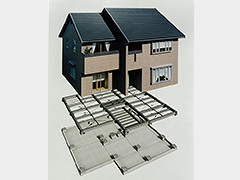
The STATEMENT WITH C-Seismic Isolation Type
![]()
Zero emission targets achieved at all factories.
Daiwa House Industry
![]()
Honored with Reuse Basics award for closed-loop resource sourcing technology and systems
Daiwa Lease
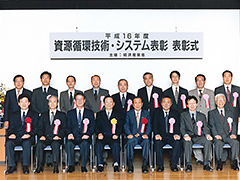
Honored with award sourcing technology and systems
![]()
DASH Project launched by Emergency Temporary Housing Construction Review Committee
Daiwa House Industry
Daiwa Lease
Toward community revitalization; construction of public rental housing through leasing
Daiwa Lease
The xevo, a new brand of single-family houses comes into being, employing a new construction method for the first time in 25 years.
Daiwa House Industry

xevo
![]()
Launched leasing business of roof greening systems and entered the greening business
Daiwa Lease
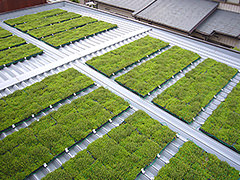
Example of eco-friendly roof construction
Go to 2010s

 ー
ー
In an era of population decline, Japan stood out for its aging society, fewer children, and rise in single-person households. Economic recession drove the number of non-regular employees to over 30%, with household incomes further declining. Amid all this, how people interacted and entertained themselves changed drastically. As mobile phones exploded in popularity, the Internet permeated households. The mid-2000s saw the appearance of blogging and community sites, creating a surge in information distributed by individuals.

NTT Docomo mobile phone with camera

![]()
Daiwa House Industry
Daiwa Lease
Operations began on moogle, ![]() an industry-first, inspection robot for narrow spaces.
an industry-first, inspection robot for narrow spaces.
Daiwa House Industry
Smart House, SMAxEco ORIGINAL, was offered for sale.
Daiwa House Industry
Developed EDV-01![]() disaster relief modular-type housing
disaster relief modular-type housing
Daiwa Lease
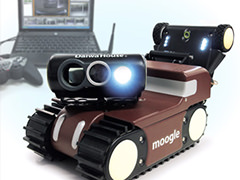
inspection robot for narrow spaces, moogle
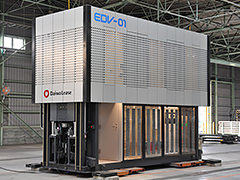
EDV-01
![]()
Released D’s SMART Series![]() , a package of environmentally friendly technologies for office buildings
, a package of environmentally friendly technologies for office buildings
Daiwa House Industry
Developed Seismic Dampers![]() for temporary buildings
for temporary buildings
Daiwa Lease
Opened Ecolo Green Parking![]() , an energy-saving tower parking
, an energy-saving tower parking
Daiwa Lease
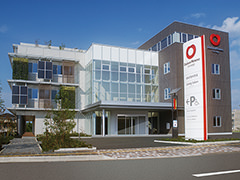
D’s Smart Office
![]()
Daiwa House Industry
Released the skye![]() urban mid-rise housing
urban mid-rise housing
Daiwa House Industry
Mighty Urban Tree, a greening project at Osaka Marubiru, was started. ![]()
Daiwa House Industry
Daiwa Lease
Fujita
Fujita Corporation ![]() became a wholly-owned subsidiary.
became a wholly-owned subsidiary.
Fujita
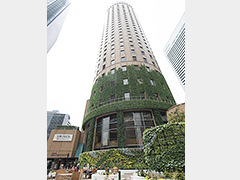
Mighty Urban Tree, a greening project at Osaka Marubiru
![]()
Fujita Corporation became a wholly-owned subsidiary. ![]()
Daiwa House Industry
Developed and released the xevo∑ ![]() , a sustainable earthquake-resistant technology to maintain the initial performance against series of large earthquakes
, a sustainable earthquake-resistant technology to maintain the initial performance against series of large earthquakes
Daiwa House Industry
Developed an assembly and construction method for aluminum dome roofs
Fujita

xevoΣ

aluminum dome roofs
![]()
Daiwa House Industry
Started the full-scale Industry-Academia-Government project to redevelop suburban housing complexes ![]()
Daiwa House Industry
Daiwa House Industry・Fujita(Joint)
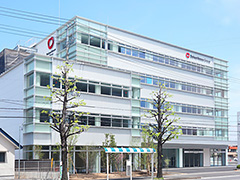
Daiwa House Fukushima Building
![]()
After the Kumamoto Earthquake occurred, Diwa House Group erected a total of 1,016 emergency temporary housing units.
Daiwa House Industry
Daiwa Lease
Daiwa House Industry
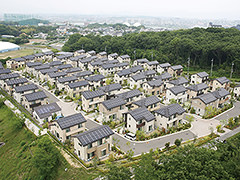
SMA×ECO TOWN Harumi-dai
![]()
For Nature, our single-family house environmental brand, came into being.
Daiwa House Industry
Started PREMIUM GranWood, our highest grade custom-built wooden residences project.![]()
Daiwa House Industry
Started the Daiwa Connect project, a connected home brand utilizing Google Home.
Daiwa House Industry

PREMIUM GranWood
![]()
Started demonstration experiments for Daiwa House Saga Building, the first electric power self-sufficient office with renewable energy in Japan.
Daiwa House Industry
Introduced HAL®Lumbar Type for Labor Support robotic suits, manufactured and sold by CYBERDYNE Inc., in all factories.
Daiwa House Industry
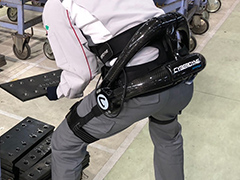
Introduced HAL®Lumbar Type for Labor Support robotic suits
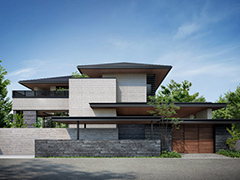
xevoΣ PREMIUM
![]()
Launched Disaster-ready Homes. These are houses that take into consideration disaster prevention. They can handle power outages for approximately 10 days even in rainy weather for the first time in Japan.
Daiwa House Industry
Started the Daiwa House Denki, service for buying and selling surplus power generated by solar power generation systems aimed at owners moving on from the Feed-in Tariff (FIT) scheme.
Daiwa House Industry
Launched Lifegenic web-only lifestyle diagnosis-based single-family house products. ![]()
Daiwa House Industry

Lifegenic
Go to 2020s

 ー
ー
The spread of smartphones changed society, leading to global growth of companies offering online shopping, social media, and other services. The 2011 Great East Japan Earthquake caused the shutdown of nuclear power plants, led to energy challenges, and the creation of green and ICT smart cities and homes. Utilizing the latest technology, the Tokyo Sky Tree® opened in 2012. Robots and AI applications were also foreshadowing the future.
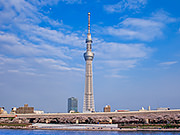
Tokyo Sky Tree

![]()
Started the full-scale introduction of power derived from renewable energy in our offices and construction sites on a national scale
Daiwa House Industry
Daiwa House Industry
Switched to using renewable energy generated in facilities operated and managed by the Group for the power we use in our factories for the first time in the housing industry.
Daiwa House Industry
Developed the archelis FX exoskeleton assist suit that reduces the burden of standing work in factories and introduced it into all of our factories(nine factories)
Daiwa House Industry
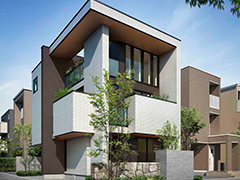
skye3
![]()
Launched the industry’s first modular bath for cats with integrated flush toilet and shampoo sink called Nekolet (February).
Daiwa House Industry
Expanded variations of Lifegenic web-only single-family house products and launched Lifegenic W wooden single-family house products (April).
Daiwa House Industry
Daiwa House Industry
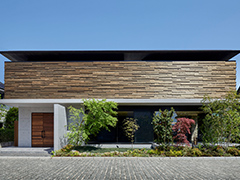
WoodResidenceMARE-希-
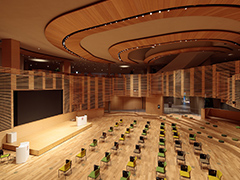
Daiwa House Group MIRAI KACHI KYOSO Center “Kotokurie”
![]()
Began the full-scale operation of Low-Emissivity Folded-Plate Roof which can control radiant heat by 80% or more
Daiwa House Industry
Started a joint field test at XR HOUSE Kitashinagawa Nagaya 1930 ![]()
Daiwa House Industry

XR HOUSE Kitashinagawa Nagaya 1930
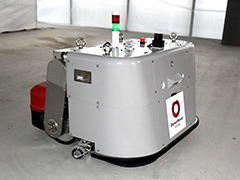
self-propelled robot for building sites
![]()
Development of D's BIM (Building Information Modeling) Room ![]()
Daiwa House Industry
Launch of Hakonowa private work booth ![]()
Daiwa House Industry
All Premist condominiums to be built after 2024 will be ZEH-M spec.
Daiwa House Industry
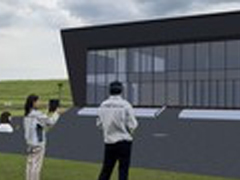
D's BIM (Building Information Modeling) Room

Hakonowa private work booth
Go to Future

The Daiwa House Group always considers the future demands of lifestyles, homes, and towns. The Group has forged ahead with research and development across a broad range of fields, drawing on the technological expertise that we have cultivated since the company's founding.
Going forward, the Group will continue to diligently address the challenges it faces and pursue the development of products and services that are “indispensable to the society of tomorrow.”












